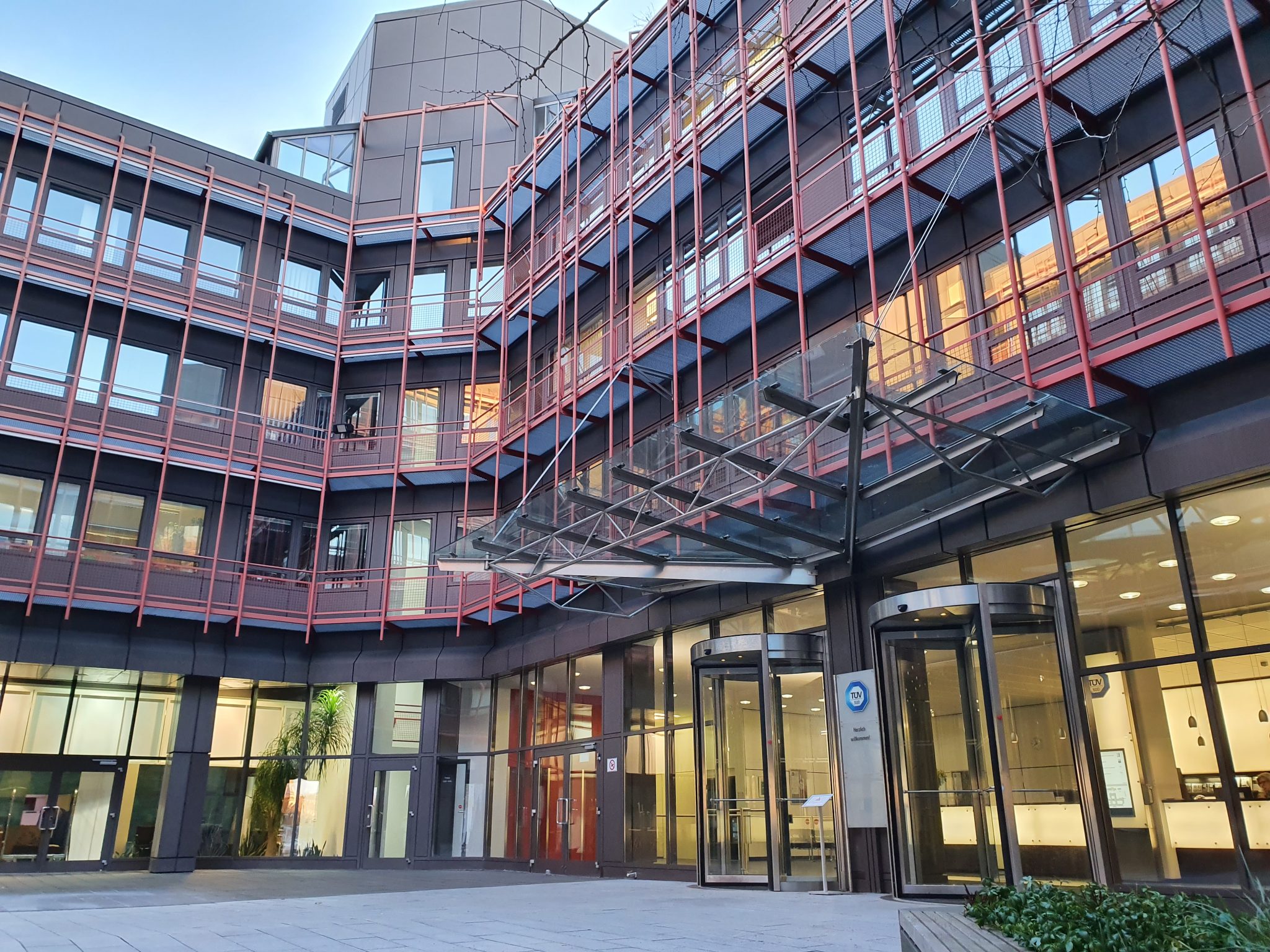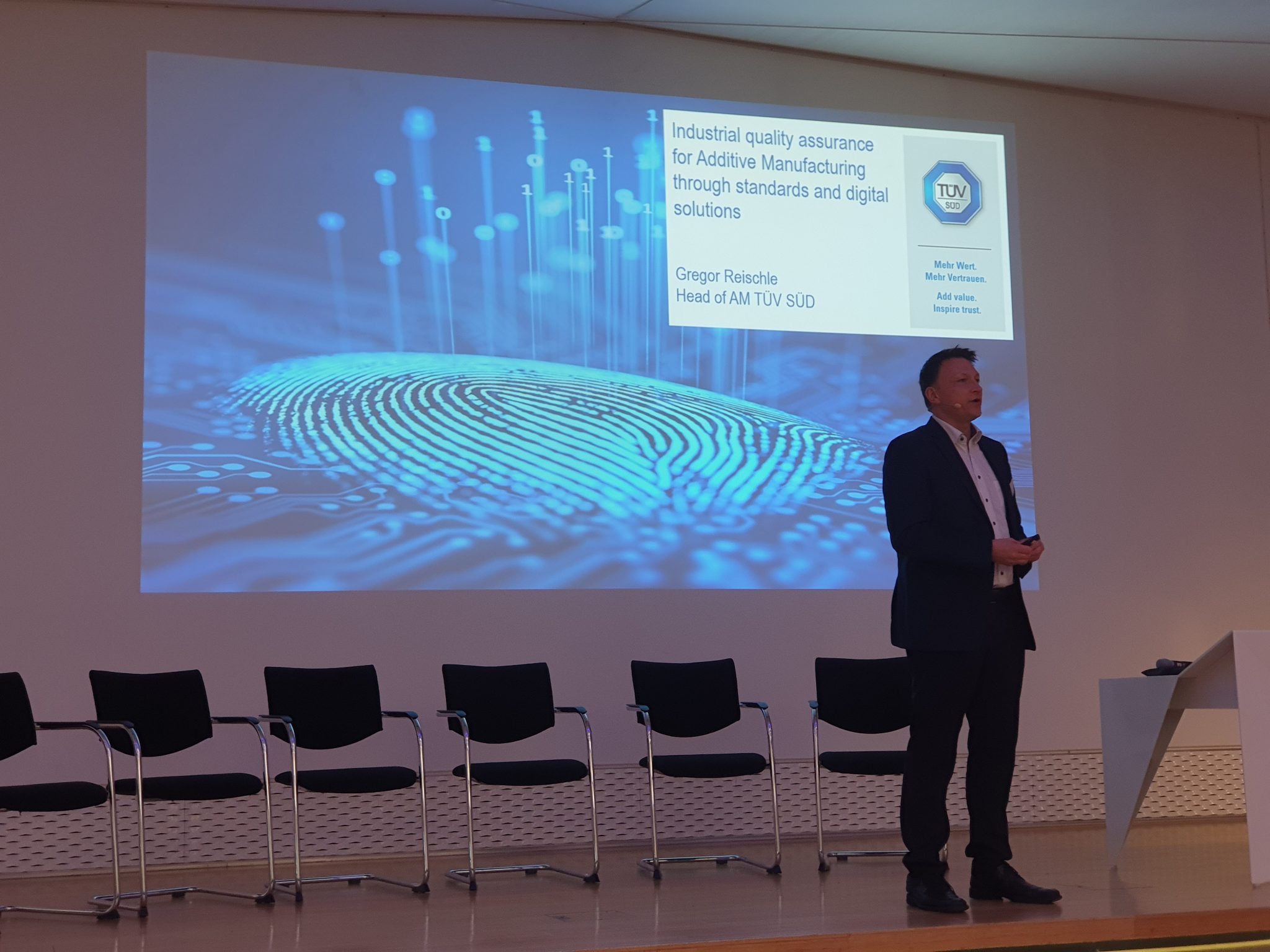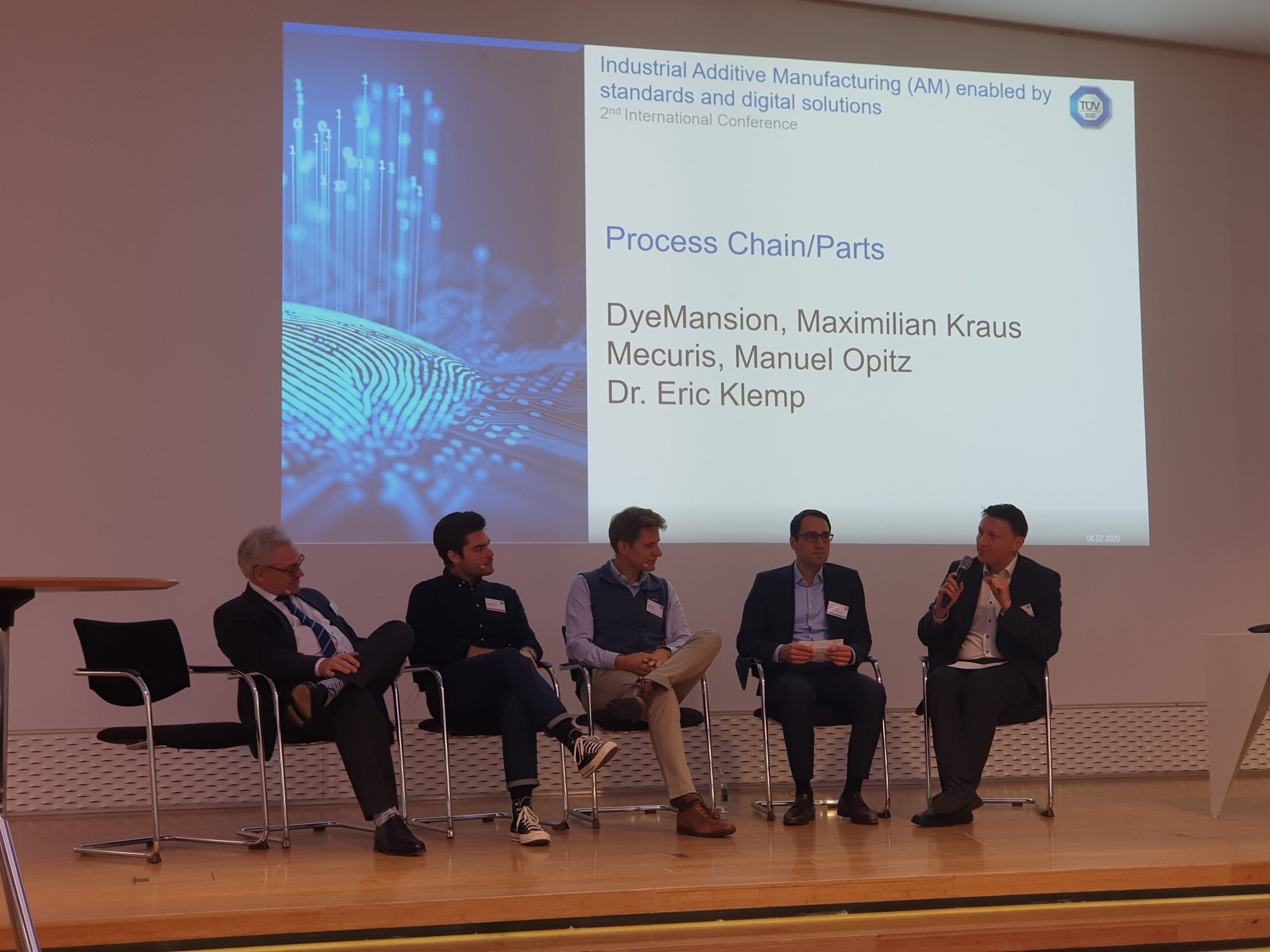Last week, 3D Printing Industry attended the 2nd TÜV SÜD Additive Manufacturing Conference in the heart of Bavaria. The Munich-headquartered technical services giant, TÜV SÜD, brought together high-level AM experts to hear industry leaders and academics share their thoughts on the implementation of industrial additive manufacturing.
3D Printing Industry made the journey to Germany’s third-largest city to learn more.
The goal of the conference was to explore ways in which to predictably implement industrial AM in several areas: “small series”, “high-end components” and “regulated industries”. Additionally, speakers addressed which parameters and processes are digitizable or automatable today. With their wealth of experience in testing, certification, verification and knowledge transfer, TÜV SÜD made the perfect hosts for such a conference.

An unconventional convention
TÜV SÜD recognises that to find novel solutions, a novel approach is necessary. Five-minute idea slams in a variety of areas including process chains/products, hardware, and materials were followed by fifteen-minute challenge panels where the attendees could grill the AM pioneers on their pitches. Each topic was concluded with an interactive solution workshop where speakers and attendees could join forces to discuss common goals and how to implement them.
Challenges on the road to AM industrialisation
The conference commenced with keynote welcome speeches by Dr. Peter Havel, CEO of TÜV SÜD Product Service and Gregor Reischle, Head of Additive Manufacturing at TÜV SÜD.
Dr. Havel stated: “We look at additive manufacturing. We have here a really new disruptive technology and it’s now at the edge of becoming established but at the moment there are still things missing. So we are participating in building standards for this industry – not only for the devices but also for the processes that have to deliver products with defined qualities.”
Gregor Reischle added: “It’s all about safe, economic, and sustainable production with industrial AM readiness. There’s a lot of work to do, that’s why collaboration is key on both specific topics and openness. Together we can create a standard which makes the cake bigger for all of us.”
It is widely accepted, then, that the relative infancy of additive manufacturing is the root cause of its lack of industry presence. With critical industries such as aerospace and medical requiring parts and processes to adhere to exceptionally high standards, the next major hurdle that needs to be jumped seems to be the standardization of industrial AM. An area where many are actively engaging.

The benefit of standardized process chains
With 3D printed parts, post-processing is an essential segment of the print to product workflow. The removal of support material and adding high-quality surface finishing are paramount in making a product attractive and, in most cases, usable.
Munich-based finishing systems manufacturer, DyeMansion, is focussed on turning 3D printed raw parts into high-value products by offering systems that make the cleaning, surface finishing and coloring processes simple.
According to Maximilian Kraus, Sales and Business Development Manager EMEA at DyeMansion: “To truly industrialize this portion of the AM process, we must meet the requirements of conventional manufacturing technologies. Only then can we rival them.”
The standardization of process chains would allow for safety regulations to be met at a faster rate and, naturally, aid the implementation of AM industrialization.

Digital DNA of products
Part certification is a crucial step and desired result when bringing an industrial product to a market. Without part certification, manufacturers lack credibility and there is no indication as to whether their products are of a high enough quality to be used for industrial applications. This is especially true for industries such as prosthetics where patient health is at stake.
Manuel Opitz, COO and Co-Founder of Mecuris, stated: “We make sure every part we deliver has been tested both physically and in a simulation. In our industry, there is a certain level of quality assurance that is just standard, so certification and user perception is very important.”
Certified products are often marked with a sticker from the certifying body. While these stickers run the risk of being forged or removed on traditionally manufactured products, 3D printed parts can have the certification fingerprint printed directly on the part. These ‘fingerprints’ can be linked to a central database which would contain essential information such as the date of certification and even relevant supporting information such as material properties. This novel approach not only matches the certification methods of classical manufacturing but is advantageous over them.
Evolution of AM hardware
Adding to Gregor Reischle’s prior comments, Dr. Dirk Simon, Managing Director at Farsoon Europe, stated: “Competitors opening up will help the industrialisation of AM.”
A collaborative approach to innovation will allow for a faster adoption rate in a variety of sectors and, ultimately, allow additive manufacturing to compete with classical technologies. It was even suggested in an interactive workshop that the single biggest challenge in AM right now is the calibration of the sensors found in the machines. The precision of these sensors affects part quality and more importantly, dimension repeatability which is crucial for mass production.

Material science has a long way to go
The feedstock, or raw material, used in 3D printing systems is often just as important as the hardware in the printer when it comes to making high quality, industrial-grade parts. Before any newly engineered materials are cleared for industrial applications, they must undergo extensive material property testing to ensure they are fit for purpose. While traditional metallurgy and chemical industries are highly regulated when it comes to storage, transportation and re-use, according to some attendees, the AM feedstock community seems to be lagging behind.
According to Dr. Sven Donisi, CEO of Rosswag Engineering, there is currently a lack of alloys qualified for sintering – approximately 50. There aren’t enough specifications or standards so metal processing companies suffer from a lack of direction when it comes to research and development. This results in limited material diversity and, in turn, limited application potential.
A more defined and standardised approach to material testing and quality assurance would provide great driving force for the feedstock division of the AM community to catch up to classical manufacturing.
A small community of great dreams
The general consensus at the 2nd TÜV SÜD Additive Manufacturing Conference accurately reflected the direction the AM community is headed. Standardization and digitization are the gateways to a fully automated additive manufacturing system in years to come. Much has been achieved in three decades of research and development but a standardized approach in the next decade could see a level playing field with classical manufacturing.
The nominations for the 2020 3D Printing Industry Awards are now open. Who do you think should make the shortlists for this year’s show? Have your say now.
Subscribe to the 3D Printing Industry newsletter for the latest news in additive manufacturing. You can also stay connected by following us on Twitter and liking us on Facebook.
Looking for a career in additive manufacturing? Visit 3D Printing Jobs for a selection of roles in the industry.
Featured image shows 2nd TÜV SÜD Additive Manufacturing Conference. Photo by Kubi Sertoglu.



